As we are coming closer to the end of 2018, let’s reflect on what has marked the year.
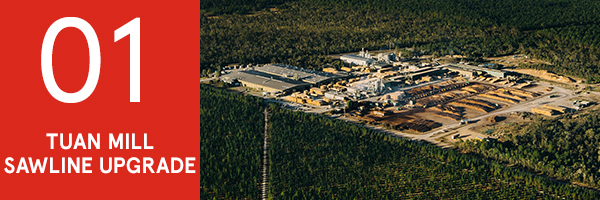
Back in April, we completed a major upgrade to key sawline components at our Tuan Mill in Queensland. The upgrades were planned many months in advance to minimise the impact on our service levels. We want to thank you once again for your cooperation during this time.
These new components provided us with both more accurate data and enhanced processing capability, meaning that before the fibre is even processed, we can more accurately position the log to convert what would have been woodchip into quality sawn boards. This major engineering project and significant investment come as the market continues to experience high levels of demand for quality, Australian, treated pine framing, as key east residential building markets remain strong.
These upgrades ensure that Tuan Mill is highly ranked by global standards, and remains the largest softwood processing site in Australia.
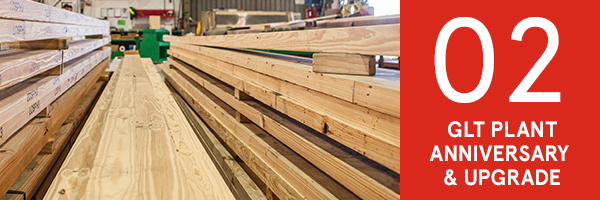
Our Glue Laminated Timber (GLT) Plant in Maryborough celebrated its 40th anniversary in August. A lot has changed since its opening in 1978, and during celebrations one of the most significant milestones in our history was announced: a major expansion to our GLT manufacturing capability.
Engineered timber manufactured from plantation softwood is an increasingly preferred building material for both commercial and residential construction projects due to its superior sustainability and environmental credentials.
We have been experiencing an increase in demand for GLT products. Our new capability will increase available volumes, improve our speed of delivery and broaden our product offer to capitalise on new growth opportunities for the timber industry.
GLT is the talk of the design and construction industry; with this investment, locally sourced, produced and certified Australian GLT products can be competitive in all project types.
The new state-of-the-art manufacturing plant will accompany the existing plant in Maryborough’s Industrial Estate. Construction has already started and is expected to be completed in Q3 2019.
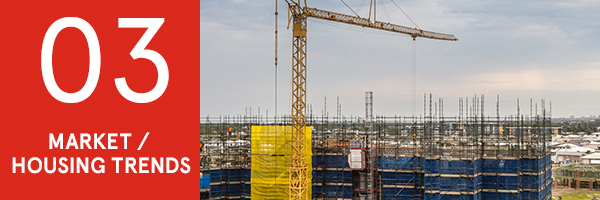
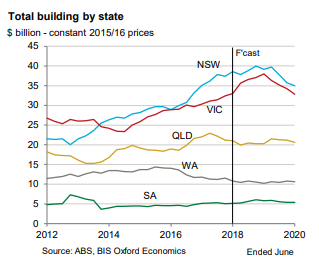
Building activity nation-wide has been mostly positive over the past five years, reaching an estimated $119.2 billion in 2017/18. This level is an all-time record, a staggering 21% higher than the previous peak in 2009/10.
New residential construction was the driving force over the 2013 - 2016 period, but now non-residential building is the key growth engine, which is estimated to have increased 14% in 2017/18.
In Queensland, we saw modest growth in housing starts as the Brisbane apartment market weighs on the state total. Gold Coast and Sunshine Coast are holding up better than Brisbane in attached dwelling starts, due to strong population inflows and good conditions in the hospitality sector. Resource exposed regions such as Darling Downs, Fitzroy and Mackay are beginning to see green shoots coming from very low bases for housing construction. Likewise, indicators for tourism focused centres further north, such as Cairns, are becoming increasingly positive.
Non-residential commencements in Queensland are estimated to have scaled back 6% in 2017/18. In line with improving economic conditions in the Sunshine State, non-residential building is forecast to surge 32% in 2018/19, expanding a further 5% in 2019/20 to $9.75 billion. A series of major projects are helping to drive this sunny outlook. In Brisbane, a new wave of office projects is set to proceed.
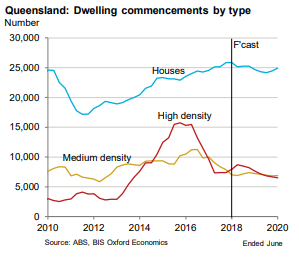
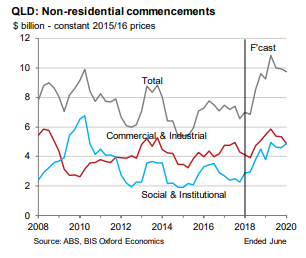
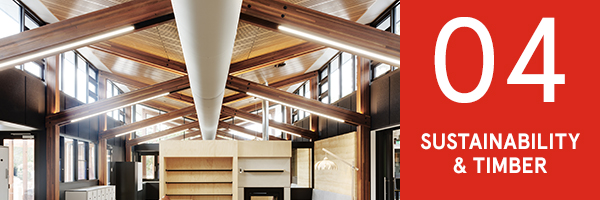
Historically, with all attention focused on building fast and inexpensively; little to no attention was given to the community and natural environment. However, as more people realise that sometimes overlooked behaviours can have an impact on climate change, sustainable, renewable and less energy intensive building materials will increasingly be preferred.
At Hyne Timber, we are proud to manufacture products from certified, sustainable, locally grown plantation softwood. It’s renewable, recyclable, waste efficient, biodegradable, non-toxic and it locks away carbon. Up to 50% of the dry weight of timber is carbon that the growing tree has removed from the atmosphere. Like any good farming practice, for each tree harvested, more than one tree is replanted so that the cycle can commence once again, generating more oxygen while removing more carbon and securing local Australian employment into the future.
Carbon emissions in the construction sector account for over 23% of total greenhouse gas emissions in Australia. Did you know that over 7.5 tonnes of carbon is removed from the atmosphere with each 12m3 house-lot of T2 Blue framing? The production, use and end-of-life processes associated with T2 Blue also uses much less energy than most other building materials.
We think it’s important to share the benefits of timber with the broader Australian consumer-base, so that they can make educated choices about the materials going into their home or investment.
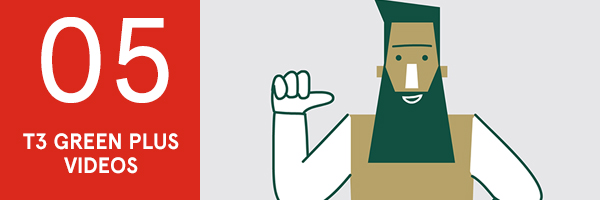
Earlier in the year, we had some fun creating a series of short videos about our all-new H3 treated framing product; T3 Green Plus.
While it’s outdoor living season, don’t hesitate to share these videos showing the benefits of our revolutionary new CodeMark certified treatment technology.
Watch these videos here.